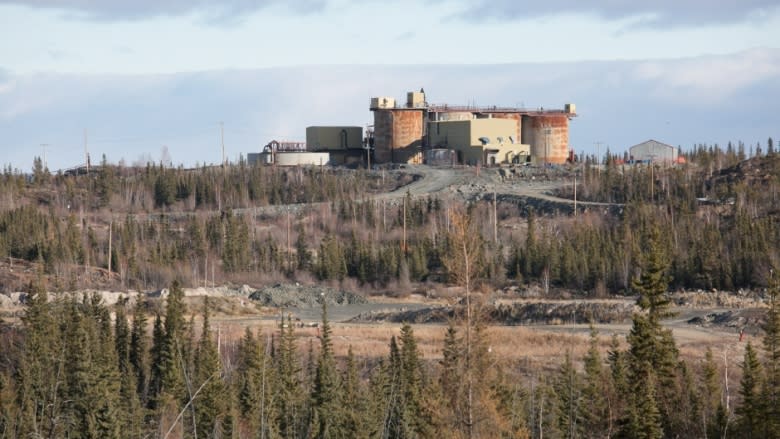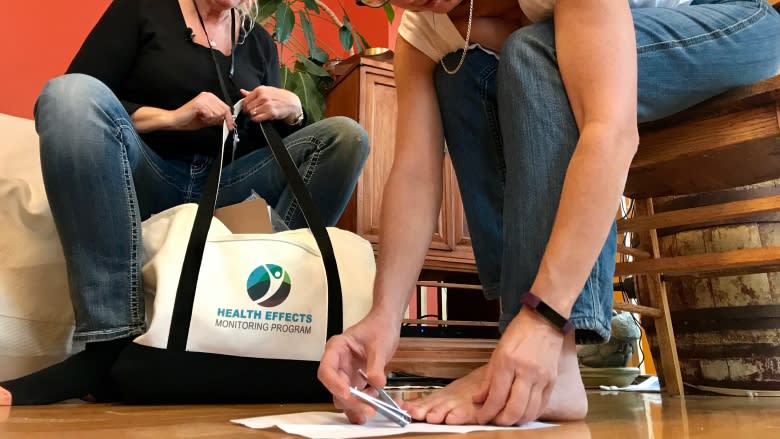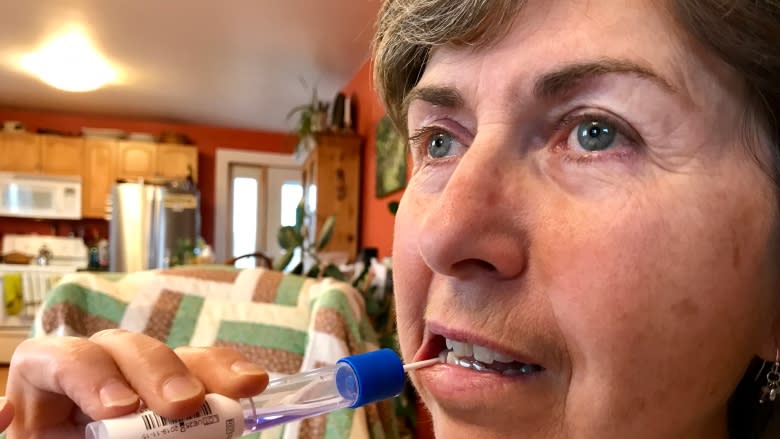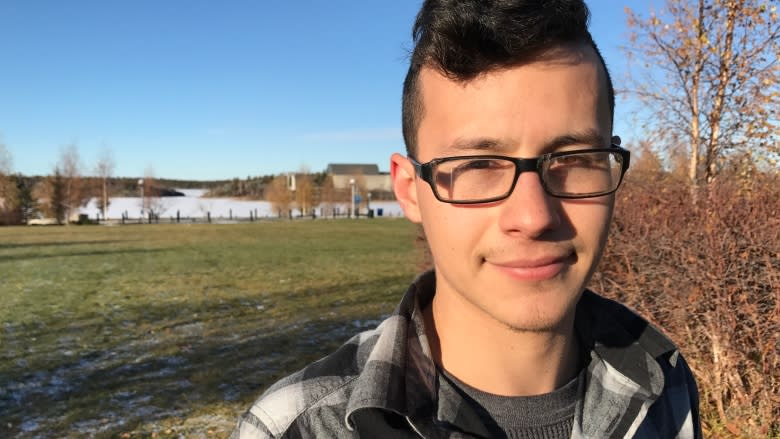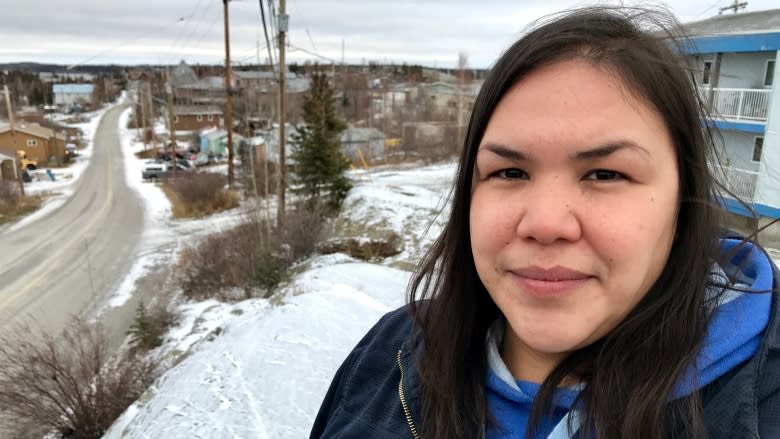Toenails, saliva and urine could answer questions about Giant Mine's toxic legacy
When Johanne Black gazes across Yellowknife's Back Bay all she sees is a monster.
"I have always worried living in this community. What are the risks on us?" she says, staring directly at the source of her fear — Giant Mine.
Black is a member of the Yellowknives Dene First Nation. Her home community of Ndilo sits directly across the bay from the toxic former gold mine.
Now shuttered, the site belched thousands of tonnes of arsenic trioxide dust — a byproduct from mining — from its roaster over its 56-year life. The federal government has been prepping the site in hopes of starting remediation in 2020, which will see the arsenic permanently frozen in underground chambers.
"We worry for our kids, we worry for our dogs, our babies," said Black. "A mine site that size with 237,000 tonnes of trioxide so close. What does that do to health? We don't know."
Now, Black is hoping to find out.
She's giving toenail clippings, urine and saliva samples to the Health Effects Monitoring Program, which will measure how much, if any, arsenic is in her body.
The program, led by a researcher from the University of Ottawa, is a requirement that came out of the environmental assessment for Giant Mine's cleanup plan. Funded through the Department of Indigenous and Northern Affairs, the study is key for monitoring any changes in exposure during remediation.
"There has been no study [on arsenic exposure] done on this scale anywhere in Canada before," said Renata Rosol, the project manager.
"People have asked for it. They want to know what's inside their bodies," said Rosol.
Gathering the samples has been slow going — only 200 participants have signed up since the study began in September. The research team is aiming for another 1,000 people, both children and adults. They'll monitor participants for a decade.
The study complements another recent assessment that looked at arsenic contamination in country food, water and soil in the same areas.
"Together, it will really create a picture for Yellowknife, on the environment, what's in the soil, water, animals and what's in the people," said Rosol.
'Sitting on a giant time bomb'
Would-be participants can volunteer and households are randomly selected — though those selected are free to choose whether to take part.
Lorie Crawford has no problem taking part.
"It's not that invasive. We need this information for our community," she said, after swabbing her gums with a cotton stick.
A research assistant in Crawford's home is collecting data. She asks a series of questions, like how much local fish and berries Crawford eats. The whole process takes about 40 minutes.
A resident of Yellowknife for 30 years, Crawford witnessed Giant Mine's shutdown. Her home also neighbours the Con Mine site, another shuttered gold mine in Yellowknife.
"It feels like you are sitting on a giant time bomb," Crawford said. But she adds that it's a part of living in Yellowknife.
"We have arsenic; Toronto has air pollution," she said.
"With the remediation of Giant Mine there could well be more heavy metals released into the environment, so I think it's really important to follow the health of Yellowknife," she said.
Dylan Coumont, a Métis man, was growing up when Giant Mine was shutting down. He's also taking part in the study.
"I just wish they had this 10 years ago to see where we started off at and where we are now," says the 23-year-old.
Now Coumont is waiting for his results.
"It's nerve-racking to give a part of yourself to test. It will be under the microscope," he said.
Building trust
The Yellowknives Dene and the North Slave Métis Alliance are working closely with the research team.
For some families, the legacy of Giant Mine makes it more painful to participate and trust results, said Stacey Sundberg, the assistant coordinator with the monitoring program.
"We have been waiting for this for a long time, with my people," she said.
Sundberg, 32, lives in nearby Dettah and is also a member of the Yellowknives Dene First Nation.
As a teenager, her school bus drove through the Giant Mine site to Yellowknife every day. That road has since been closed and re-directed for the remediation work.
"It was very hard for us because we couldn't harvest any animals, no berries. Even the water. We couldn't drink it from around our communities," she said.
Sundberg says some people still mistrust government and doctors.
"It's emotional for them. Family members getting sick and passing away. They know it's because of Giant Mine, but doctors would say otherwise, like [blaming] your lifestyle," said Sundberg.
She says people also recall government officials taking hair samples from Dene children in the 1970s and many never saw the results.
"Those people are kind of hesitant," she said. "We have to explain to them how this [study] is going to go down."
"We need to start building that trust together and build a better relationship with the government. Help them help us."
Results in spring
With the uncertainty of sporadic thawing permafrost in the region, Sundberg says getting baseline data now is critical. It will ensure any arsenic exposure or changes are on the record for future generations who may seek compensation.
"The elders always say, 'This is our home we have nowhere to go.'"
The first round of participants will get results in the spring. Anyone with high arsenic levels can take a more thorough survey and blood test to find out why. All participants will get retested for arsenic and other contaminates in 10 years.
Further followup studies with the monitoring program are planned in five years on children only.
Correction : A previous version of this story stated that Giant Mine had a smelter on site. In fact, it was a roaster.(Nov 08, 2017 12:53 PM)



